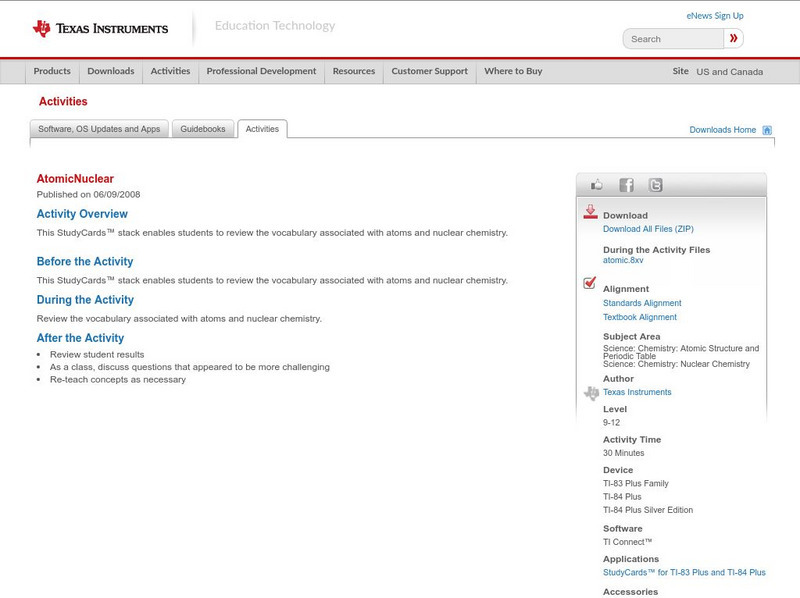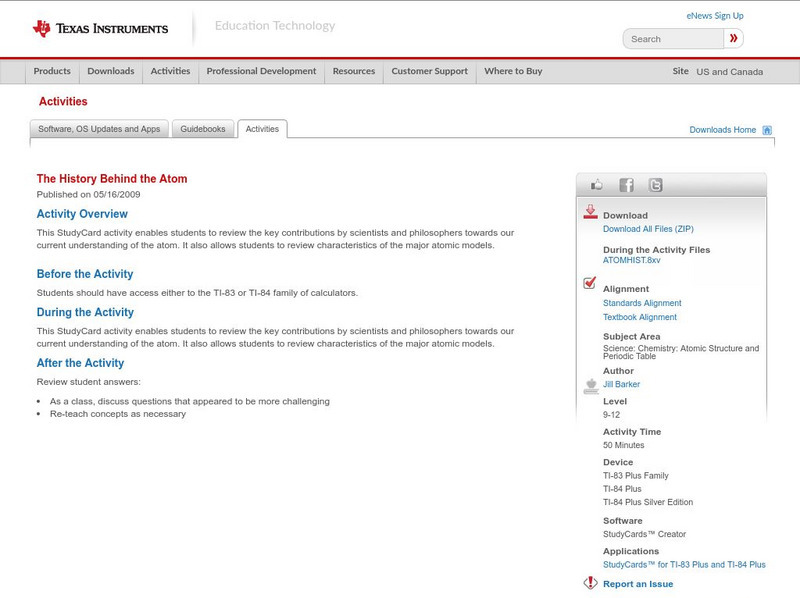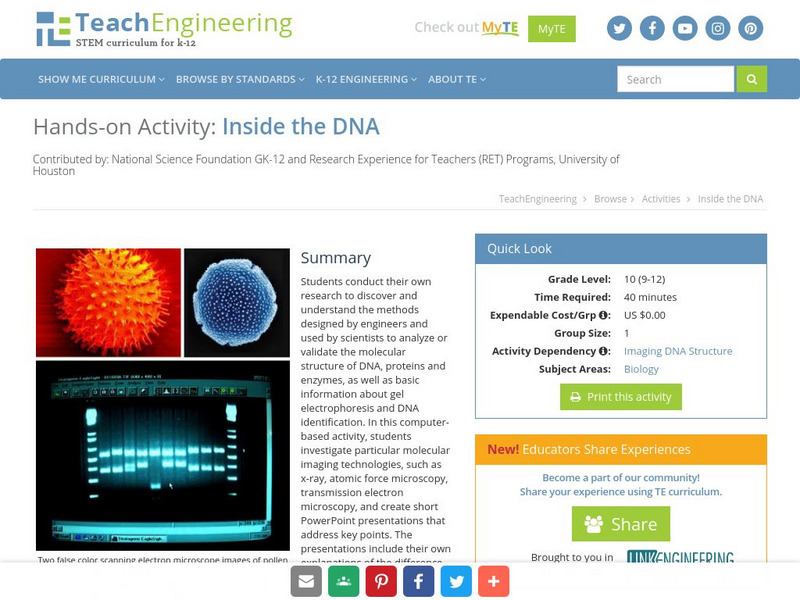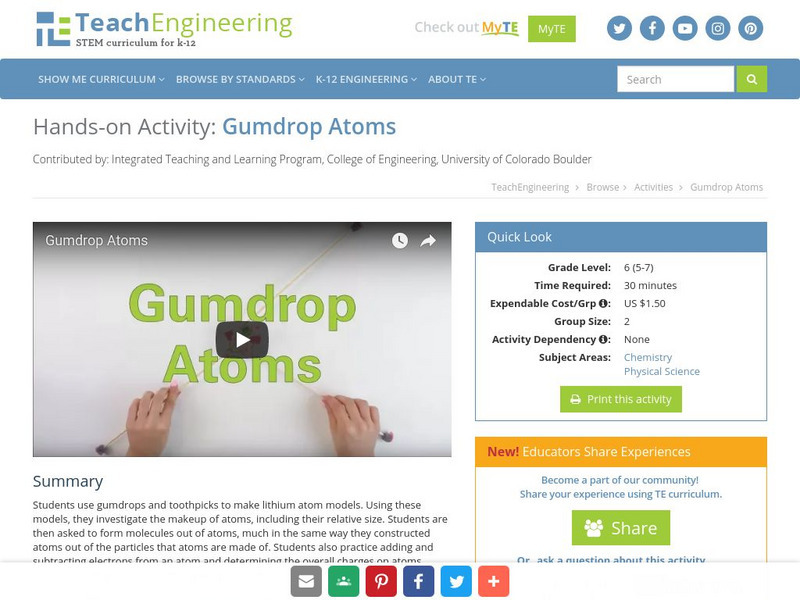Hi, what do you want to do?
Super Teacher Tools
Classroom Jeopardy
Why not review for that chemistry test with a little healthy classroom competition? With a fun and interactive Jeopardy-style game, you can adjust the number of teams, keep track of scores, and even make your own test if the provided...
Teach Engineering
Inside the DNA
Get your class to take a closer look at DNA. Pupils conduct research to determine the methods used by scientists to analyze the molecular structure of DNA. The class members investigate different types of molecular imaging along with gel...
National Nanotechnology Infrastructure Network
The Micro and Macro World Around Us
Don't let your eyes play tricks on you ... use scale to keep your eyes in check! Young scholars observe images without scale and try to identify the structure. Then, they look at the same image with a scale bar and assess whether their...
Teach Engineering
Gumdrop Atoms
There's nothing sticky about the resource, unless you count the gumdrops! Scholars create a model of a lithium atom, complete with protons, neutrons, and electrons. It's just that these models are made with gumdrops and toothpicks.
National Nanotechnology Infrastructure Network
Scale Models
With instructions to adapt the activities for any grade K-12, any teacher can incorporate the concept of scale into the classroom with a simple, yet effective lesson.
Teach Engineering
Energy Forms and States Demonstrations
Does a tennis ball have energy? What about a bowling ball? Demonstrate concepts of different forms of energy forms and states with a variety of objects. Using the equations for potential and kinetic energy,...
National Nanotechnology Infrastructure Network
Shrink Me!
The incredibly shrinking meter—decimeters to centimeters, to millimeters, and now to nanometers! Learners may have a difficult time visualizing particles on a nanoscale. Help them see a little clearer using a well-designed lesson...
National Nanotechnology Infrastructure Network
What’s In Your Neighborhood?
Chart your way to an understanding of nanoscale. Using a Google map, learners estimate a radius around their location of 1,000 and 1,000,000 meters. Predicting what 1,000,000,000 meters would look like takes them off the charts!...
Chem Tutor
Chem tutor.com: Atomic Structure
This page provides a thorough and comprehensible discussion of the structure of the atom. Includes helpful diagrams and instructions for filling electron shells, reading the Periodic Table, and drawing Lewis Structures.
Texas Instruments
Texas Instruments: Atomic Structure
This StudyCards stack enables students to review the terms associated with learning and using the Periodic Table of the Elements.
Texas Instruments
Texas Instruments: Atomic Nuclear
This StudyCards stack enables students to review the vocabulary associated with atoms and nuclear chemistry.
Museum of Science
The Atom's Family: The Phantom's Portrait Parlor
In this activity, students investigate the atomic world by attempting to reduce paper to the size of an atom. Although students won't be able to cut the paper that small, they will gain a better understanding of how small the atom is.
Texas Instruments
Texas Instruments: The History Behind the Atom
This StudyCard activity enables students to review the key contributions by scientists and philosophers towards are current understanding of the atom. It also allows students to review characteristics of the major atomic models.
TeachEngineering
Teach Engineering: Inside the Dna
Students conduct their own research to discover and understand the methods designed by engineers and used by scientists to analyze or validate the molecular structure of DNA, proteins and enzymes, as well as basic information about gel...
TeachEngineering
Teach Engineering: Gumdrop Atoms
In this activity, students make a model of a lithium atom using gumdrops and toothpicks. Using this model, they investigate the makeup of an atom, including its relative size. Students also practice adding and subtracting electrons from...
Other popular searches
- Atomic Structure Time Line
- Atomic Structure Crossword
- Atomic Structure Lesson Plan
- Atomic Structure Worksheet
- Basic Atomic Structure
- Atomic Structure Bohr Model
- Atomic Structure Interactive
- Chemistry Atomic Structure
- Atomic Structure Lewis Dots
- The Atomic Structure
- Atomic Structure Activities
- Science, Atomic Structure


















